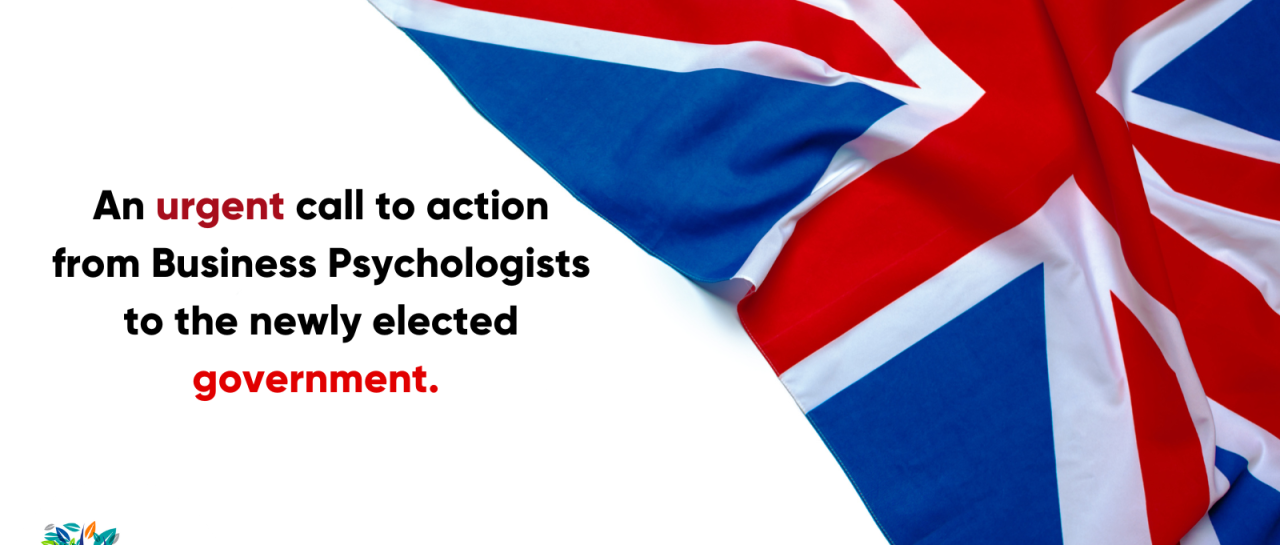Authored by Certified Business Psychologist Laura Howard. Certified Business Psychologist, Laura Howard, reflects on the webinar she recently delivered to ABP members. Below she outlines the main findings of her published research uncovering systematic barriers women face when being authentic as leaders. Importantly, she gives…

Article based upon webinar delivered October 2023
Authored by Zana Busby (Business & Consumer Psychologist; Founder, ZANA.B psychological studio)
In recent years, work has undergone significant transformations due to technology, societal shifts, and events like COVID-19, which are permanent. Work is now more challenging, emphasizing the importance of a great workplace over just salary and career growth. Employees seek companies with leaders who can navigate complexity and promote a supportive, flexible, and inclusive environment. We must ensure positive employee experiences, including a focus on creating healthier workplaces, if we want to succeed in today’s competitive market. This holistic approach, which encompasses all employees’ well-being, not only benefits society but also enhances business competitiveness, attracting loyal employees and customers and fostering a positive brand reputation. Empathy plays a crucial role in building a better, healthier workplace and nurturing meaningful employee relationships.
The Power of Empathy in Leadership
Empathy is the cornerstone of effective leadership across all industries. It means understanding and sharing others’ emotions, perspectives, and motivations. It’s not sympathy but putting yourself in other person’s shoes. In any relationship, including at work, showing genuine empathy can provide clarity and healing in times of distress.
The Business Case for Empathy
In the current landscape, empathy is crucial for businesses facing the cost-of-living crisis, as it significantly impacts employees, customers, and stakeholders. Demonstrating empathy is essential for adapting strategies, fostering better relationships, and making sound decisions in the business world. Empathetic leaders can positively impact employee retention, workplace productivity, and overall business performance. For instance, 95% of employees are more likely to stay with empathetic organizations, and 81% are willing to work longer hours for empathetic employers. Additionally, two-thirds of employees believe empathy improves productivity and morale, while 80% agree that an empathetic workplace enhances business performance.
The Demand for Empathetic Leadership
Hiring and developing human-focused leaders who can collaborate with diverse groups is crucial for a company’s success. This approach enhances team dynamics, performance, reputation, customer relations, and adaptability to change. Empathy is gaining recognition as a critical leadership competency, despite being traditionally considered a soft skill. There’s growing demand for empathy in various industries, but an “empathy gap” between employees, HR, and CEOs still persists. Therefore, training is essential for closing this empathy gap and fostering human-focused leadership.
Addressing Mental Health Concerns
In recent studies, concerning statistics reveal the overwhelming impact of mental health issues in the UK. A staggering 74% of individuals admit to feeling such immense stress that they become overwhelmed or struggle to cope, according to the Mental Health Foundation and YouGov. Additionally, data from the Office for National Statistics (ONS) indicates that approximately 1 in 6 adults in the UK is currently battling depression. These alarming figures are exacerbated by findings from ‘The State of the Nation’s Health and Wellbeing in 2023’ report, which was launched in the Houses of Parliament. The report underscores that a significant 63% of the population believes that the cost-of-living crisis is detrimentally affecting both the physical and mental health of the nation, emphasizing the urgent need for comprehensive mental health and social support initiatives.
Cultivating Empathy in Leadership
To create a more empathetic work environment, leaders should establish psychological safety for open discussions and encourage regular one-on-one check-ins with team members, fostering a safe space for addressing concerns and sharing successes. Active listening, a foundational skill for empathetic leadership, involves validating employees’ feelings and expressing understanding of their concerns without interruptions. Transparency is essential, providing information about changes and uncertainties to build trust. Demonstrating empathy by understanding and acknowledging employees’ emotional reactions, especially during challenging times, helps foster a sense of value and support. This approach promotes human connections and, ultimately, a more empathetic workplace.
Measuring Employee Happiness
The correlation between empathy and happiness, as well as the strong connection between employee well-being and productivity, is undeniable. Given the significant portion of our lives spent in the workplace, it’s imperative to foster a positive environment. I would argue that measuring employee happiness is a fundamental practice for a people-oriented organization committed to prioritizing well-being. Employing methods such as surveys, feedback, and one-on-one interactions to gauge team happiness allows for data-driven decisions that can bolster employee welfare and align with the company’s objectives.
Developing Empathy
Developing empathy is crucial for businesses, benefiting employees, HR professionals, and CEOs. Training in empathy skills, which can take the form of workshops, online courses, or one-on-one coaching, is highly sought after. Workshops often involve role-playing and group discussions to simulate various workplace scenarios requiring empathy. Individual coaching sessions with empathy coaches aid in personalized growth, starting with self-awareness exercises and self-regulation techniques to manage emotions effectively, especially in high-stress situations.
In conclusion, empathy in the workplace is no longer a soft skill but a critical competency for leaders and organizations. Fostering empathy not only enhances employee well-being and productivity but also impacts customer satisfaction and overall business performance. As we navigate a changing world, the ability to understand and share the emotions of others is a key element of successful leadership.



